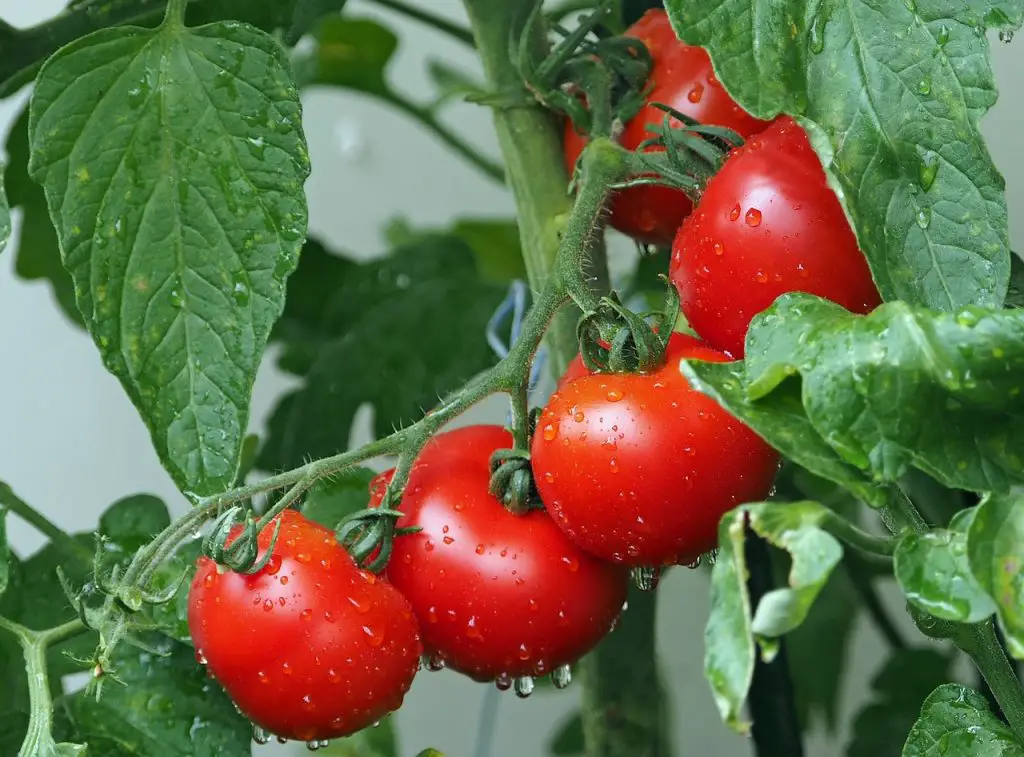Pico de Gallo, often referred to simply as “pico,” is a beloved Mexican salsa that has found its way into countless kitchens and restaurants around the world. This vibrant and refreshing condiment is known for its lively combination of flavors and its versatility as a topping or side dish. In this article, we will delve into the origins of pico de gallo and explore the key ingredients that make up this delectable salsa.
Origins of Pico de Gallo
Pico de Gallo, whose name translates to “rooster’s beak” in Spanish, is believed to have originated in Mexico. While its exact historical roots are somewhat debated, it is commonly associated with Mexican cuisine, particularly in regions like Jalisco and Puebla. This simple yet flavorful salsa has become a staple in Mexican households and is enjoyed on a wide range of dishes, from tacos to grilled meats and beyond.
What Makes Pico de Gallo Unique?
Pico de Gallo stands out for several reasons, making it a favorite among salsa enthusiasts. Here are some of the key characteristics that set it apart:
Freshness: Pico de Gallo is all about fresh ingredients. Unlike cooked salsas, the ingredients in pico de gallo are left raw, preserving their vibrant colors and crisp textures. This freshness contributes to the salsa’s bright and invigorating taste.
Chunky Texture: Pico de Gallo is known for its chunky texture, with each ingredient finely diced or chopped. The contrast in textures between the vegetables and herbs creates a delightful mouthfeel.
Vibrant Colors: The combination of colorful ingredients like tomatoes, onions, and cilantro gives pico de gallo its visually appealing appearance. It’s a feast for the eyes as well as the palate.
Versatility: Pico de Gallo is incredibly versatile. It can serve as a condiment, a topping, a dip, or even a salad on its own. Its versatility makes it an ideal accompaniment for a wide range of dishes.
Key Ingredients of Pico de Gallo
Now, let’s explore the primary ingredients that make up pico de gallo and discuss their individual contributions to the salsa’s flavor profile.
Tomatoes
Fresh, ripe tomatoes are the foundation of pico de gallo. They provide a sweet and slightly acidic base for the salsa. Roma tomatoes are a popular choice for their firm texture and vibrant red color, but any ripe tomato variety will work. To prepare the tomatoes for pico de gallo, you’ll need to remove the seeds and excess liquid, as they can make the salsa too watery. Simply cut the tomatoes into small cubes or dice them finely to maintain the desired chunky texture.
Onions
White or red onions are commonly used in pico de gallo, and their sharp and pungent flavor adds depth to the salsa. Red onions are preferred by some for their milder taste and vibrant color. To incorporate onions into pico de gallo, finely dice them and soak them in ice water for a few minutes to reduce their sharpness. Drain and pat them dry before adding them to the salsa.
Cilantro
Cilantro, with its bright green leaves and citrusy, slightly peppery flavor, is an essential herb in pico de gallo. Chopped cilantro not only contributes to the salsa’s fresh taste but also adds a pleasant herbal note. Be sure to include both the leaves and tender stems when chopping cilantro.
Jalapeño Peppers
Jalapeño peppers provide the heat and spice in pico de gallo. The level of spiciness can be adjusted to your preference by removing or retaining the seeds and membranes of the peppers. To incorporate jalapeños, finely chop them and add them to the salsa. Remember that the heat can vary from pepper to pepper, so taste a small piece before adding too much to avoid overwhelming your salsa.
Lime Juice
Freshly squeezed lime juice is a crucial component of pico de gallo. It adds acidity and brightness while enhancing the overall flavor of the salsa. A squeeze of lime juice not only complements the other ingredients but also helps prevent the salsa from oxidizing and losing its freshness. Start with the juice of one lime and adjust to taste.
Salt
Salt is a simple but essential seasoning that brings out the flavors of the other ingredients. It helps balance the sweetness of the tomatoes and the heat of the peppers. Add salt to taste, starting with a pinch and adjusting as needed.
Optional Ingredients
While the core ingredients mentioned above are the traditional components of pico de gallo, many variations exist, and additional ingredients can be incorporated to suit your preferences. Some optional ingredients include:
Garlic: Minced garlic can add a subtle depth of flavor to your pico de gallo.
Avocado: Diced avocado can provide creaminess and a rich texture to the salsa.
Corn: Grilled or roasted corn kernels can introduce a sweet and smoky element.
Mango: Chopped mango adds sweetness and a tropical twist to the salsa.
Pineapple: Diced pineapple provides a sweet and tangy contrast to the savory ingredients.
Preparation and Serving Suggestions
Now that you know the key ingredients of pico de gallo, here’s how to prepare it:
Wash and prep all your ingredients. Dice the tomatoes, finely chop the onions, cilantro, and jalapeño peppers, and squeeze the lime juice.
In a mixing bowl, combine the diced tomatoes, chopped onions, cilantro, jalapeño peppers, and a pinch of salt.
Squeeze the fresh lime juice over the mixture. Start with the juice of one lime and adjust to your taste preferences.
Gently toss all the ingredients together until well combined.
Taste and adjust the salt, lime juice, or jalapeño peppers to achieve your desired flavor balance.
Let the pico de gallo sit for about 15-30 minutes before serving to allow the flavors to meld together. You can also refrigerate it for a few hours for even better results.
Serve your homemade pico de gallo as a topping for tacos, grilled meats, or fish. It also makes a delicious dip for tortilla chips or a refreshing side salad.
Pico de Gallo is a quintessential Mexican salsa known for its fresh and vibrant flavors. Its core ingredients, including tomatoes, onions, cilantro, jalapeño peppers, lime juice, and salt, create a harmonious blend of sweet, spicy, and tangy elements. While these ingredients form the traditional base of pico de gallo, its versatility allows for endless variations and personalization. Whether you enjoy it as a condiment, topping, dip, or salad, pico de gallo is a delightful addition to your culinary repertoire, adding a burst of freshness and flavor to any dish. So, why not give it a try and savor the essence of Mexican cuisine in your own kitchen?
Pico de Gallo: A Culinary Journey
Pico de Gallo is not just a salsa; it’s a culinary journey through the rich tapestry of Mexican cuisine. While we’ve explored the traditional ingredients and preparation method, it’s important to note that regional variations and personal preferences can lead to countless unique interpretations of this beloved salsa.
Regional Variations:
Throughout Mexico, you’ll encounter regional variations of pico de gallo, each influenced by the local ingredients and culinary traditions. Here are a few noteworthy examples:
Salsa Fresca: In many regions, pico de gallo is simply referred to as “salsa fresca” or “fresh salsa.” While the core ingredients remain the same, some regions may include unique twists, such as adding diced mango or pineapple for a sweet contrast.
Salsa de Molcajete: This variation is prepared using a traditional volcanic stone mortar and pestle called a “molcajete.” The grinding process releases essential oils from the ingredients, intensifying the flavors and creating a rustic, textured salsa.
Pico de Gallo Verde: Green pico de gallo features tomatillos as the base instead of tomatoes, resulting in a tangier and slightly tart salsa. It is often paired with grilled meats or used as a dip.
Pico de Gallo de Frutas: Some regions incorporate various fruits into their pico de gallo, such as diced oranges, strawberries, or jicama, for a sweeter and more refreshing salsa.
Personalization:
Pico de Gallo is also a canvas for personalization. Home cooks and chefs alike enjoy experimenting with additional ingredients and flavors to create their signature versions. Here are a few creative ideas for personalizing your pico de gallo:
Smoky Chipotle: Add finely minced chipotle peppers in adobo sauce for a smoky and spicy kick.
Creamy Avocado: Mash ripe avocado into your pico de gallo to create a creamy and rich texture.
Radish Crunch: Include finely diced radishes for an extra crunch and a mild peppery flavor.
Pickled Red Onion: Instead of raw onions, use pickled red onions for a sweeter and tangier twist.
Cucumber Freshness: Dice cucumbers for a cool and refreshing element that complements the heat from the peppers.
Roasted Red Peppers: Roast red bell peppers and dice them finely to add a smoky sweetness to your salsa.
Health Benefits of Pico de Gallo:
Aside from its delicious taste, pico de gallo offers several health benefits due to its fresh and wholesome ingredients:
Rich in Vitamins: Tomatoes and peppers are excellent sources of vitamin C, which supports the immune system. Additionally, tomatoes provide vitamin A and potassium.
Antioxidant-Rich: Tomatoes and onions contain antioxidants like quercetin and lycopene, which help protect cells from damage.
Low in Calories: Pico de gallo is a low-calorie condiment, making it a healthy choice for those watching their calorie intake.
Fresh Herbs: Cilantro is known for its potential anti-inflammatory properties and may aid in digestion.
Hydration: The high water content in tomatoes and cucumbers contributes to hydration.
Pico de Gallo is more than just a salsa; it’s a culinary masterpiece that reflects the vibrant and diverse flavors of Mexican cuisine. Whether you stick to the traditional recipe or embark on your own creative journey, pico de gallo is a versatile condiment that adds a burst of freshness, color, and flavor to any meal. Its simple yet powerful combination of fresh ingredients brings people together around the table to savor the essence of Mexican gastronomy. So, don’t hesitate to try your hand at making pico de gallo, and let your taste buds dance to the rhythm of this beloved Mexican salsa.




